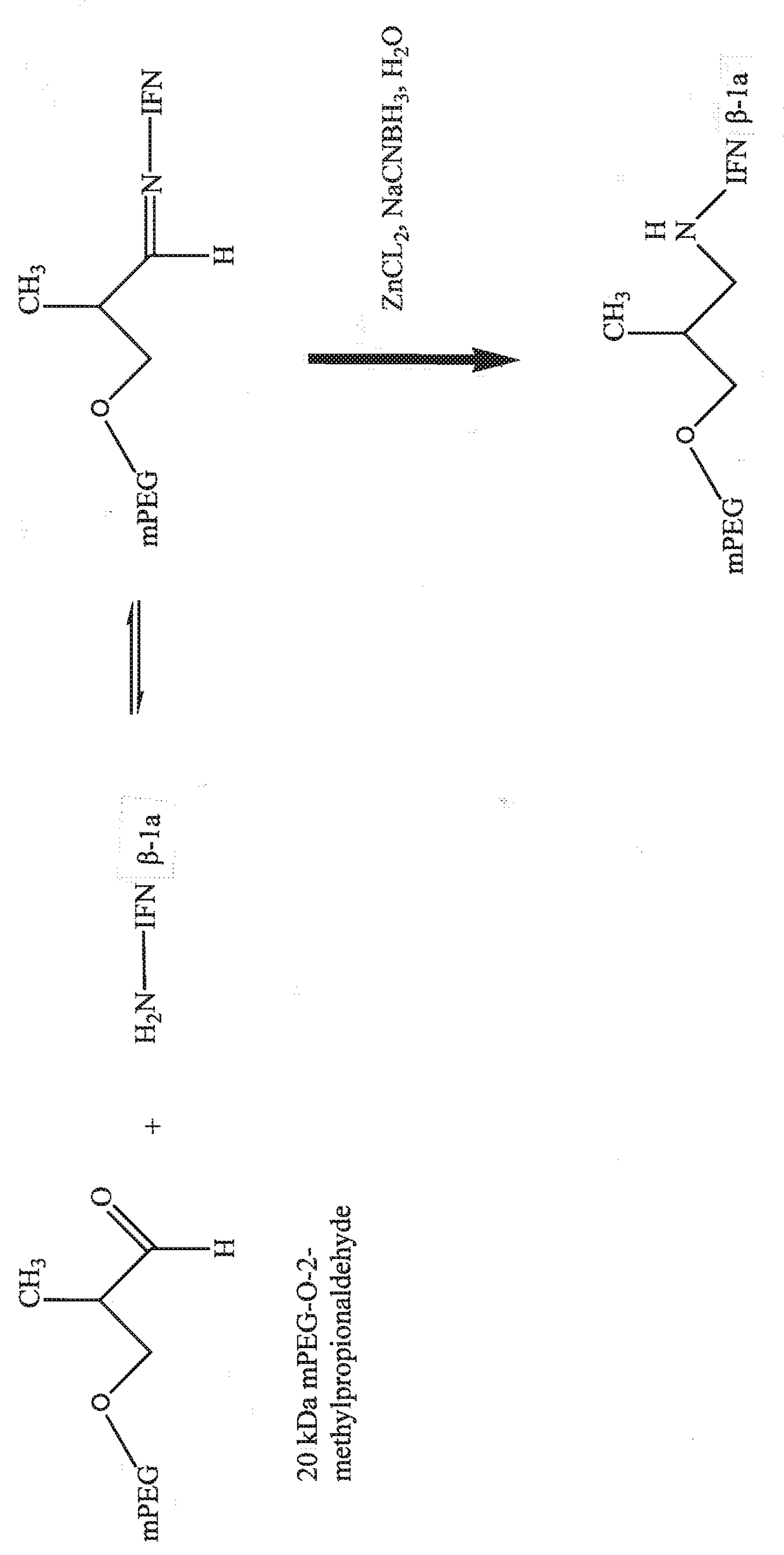Pegylation method
- Summary
- Abstract
- Description
- Claims
- Application Information
AI Technical Summary
Benefits of technology
Problems solved by technology
Method used
Image
Examples
example 1
PEGylation Reaction
[0148]Purified, recombinantly produced IFN β-1a in an ultrafiltration pool is transferred to a closed, jacketed stainless steel reaction vessel and the temperature is brought to 18° C.-26° C. under constant mixing. The target volume is 21 L-22.5 L. A stock solution of 20 kDa mPEG-O-2-methylpropionaldehyde in acetate, Bis-Tris buffer is prepared and added to the IFN β-1a to a target concentration of 4.5 mg / mL active 20 kDa mPEGO-2-methylpropionaldehyde. The target pH of the coupling reaction is pH 5. At pH 5, the reductive amination chemistry occurs selectively at the α-amino group of the N-terminal amino acid residue because it is significantly less protonated than the α-amino group of lysine residues. Following mixing, a stock solution of the Lewis acid catalyst is added to the reaction mixture to a target concentration of 1 mM. The mild reductant NaCNBH3 is then added as a stock solution (under constant mixing) to the reaction mixture to a final concentration of...
example 2
PEGylation Reaction
[0149]Example 1 is repeated except that the ultrafiltration pool was stored frozen before running the PEG coupling reaction. The bottles are thawed at ambient temperature, pooled into the same reaction vessel and brought to ambient temperature.
PUM
| Property | Measurement | Unit |
|---|---|---|
| Temperature | aaaaa | aaaaa |
| Temperature | aaaaa | aaaaa |
| Temperature | aaaaa | aaaaa |
Abstract
Description
Claims
Application Information
 Login to View More
Login to View More - R&D
- Intellectual Property
- Life Sciences
- Materials
- Tech Scout
- Unparalleled Data Quality
- Higher Quality Content
- 60% Fewer Hallucinations
Browse by: Latest US Patents, China's latest patents, Technical Efficacy Thesaurus, Application Domain, Technology Topic, Popular Technical Reports.
© 2025 PatSnap. All rights reserved.Legal|Privacy policy|Modern Slavery Act Transparency Statement|Sitemap|About US| Contact US: help@patsnap.com

